


xxxxxThe Polish romantic composer Frédéric Chopin wrote almost entirely for the piano, and his inspired music, rich in melody, included waltzes, nocturnes, preludes, mazurkas and polonaises. He settled in Paris in 1831, and it was here, the artistic centre of Europe, that he won fame for his compositions and the recitals he gave in the fashionable salons of the city. His famous affair with the notorious woman novelist George Sand began in 1838, and it was during this ten-year liaison that he composed his best works, many written in the peace of Sand’s country estate at Nohant. These included 24 delightful preludes, his masterly Second Piano Sonata of 1839 (which includes his “Funeral March”) and his Barcarolle and Polonaise-Fantaisie of 1846. He numbered among his friends the composers Felix Mendelssohn, Vincenzo Bellini and Franz Liszt, all of whom admired the originality and sparkling beauty of his refined, intimate pieces. His compositions, brilliantly played, made the piano an instrument in its own right, and his harmonic and rhythmic innovations influenced the likes of the Hungarian Franz Liszt, the German Richard Wagner, and the Frenchman Claude Debussy. Furthermore, his interpretation of the polonaise and mazurka - music native to Poland - encouraged other composers to write romantic works inspired by their love for their homelands, notably Antonin Dvorák, Edvard Grieg and Pyotr Tchaikovsky.
FRÉDÉRIC FRANÇOIS CHOPIN 1810 - 1849
(G3c, G4, W4, Va)
Acknowledgements
Chopin: by the French painter Eugène Delacroix (1798-1863), 1838 – The Louvre, Paris. Sand: detail, by the French painter Auguste Charpentier (1813-1880), 1838 – Musée de la Ville de Paris, Musée Carnavalet, Paris. Valldemossa: date and artist unknown. Field: detail, by the German artist Carl Meyer (1798-1868), after a portrait by the Prussian engraver Anton Wachsmann (1765-1836). Sand: by the French painter Thomas Couture (1815-1879). Chopin & Sand: detail, by the Austrian painter and illustrator Adolf Karpellus (1869-1919), 1917. Liszt: detail, by the German-born French portrait painter Henri Lehmann (1814-1882), c1839 – Musée de la Ville, Paris, Musée Carnavalet, Paris. Dance of Death: by the German painter and printmaker Michael Wolgemut (1434-1519), contained in The Nuremberg Chronicle by the German historian Hartmann Schedel (1440-1514), 1493 – Royal Library, Copenhagen, Denmark. Albéniz: detail, by the Spanish Catalonian artist Ramon Casas (1866-1932) – National Art Museum of Catalonia, Barcelona, Spain.
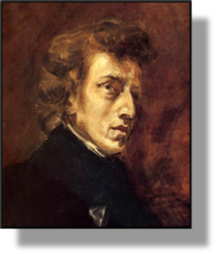 xxxxxThe Polish romantic composer and pianist Frédéric Chopin, one of the world’s most talented and inventive musicians, wrote almost entirely for solo piano, and produced a steady stream of inspired music, including waltzes, nocturnes, preludes, mazurkas and polonaises. His mastery of the keyboard revolutionized the technique of playing the pianoforte, and his compositions, mostly in relatively small pieces, became known for their attention to pure form and their rich and varied melody, ranging in mood from the stormy and sad to the tender and majestic.
xxxxxThe Polish romantic composer and pianist Frédéric Chopin, one of the world’s most talented and inventive musicians, wrote almost entirely for solo piano, and produced a steady stream of inspired music, including waltzes, nocturnes, preludes, mazurkas and polonaises. His mastery of the keyboard revolutionized the technique of playing the pianoforte, and his compositions, mostly in relatively small pieces, became known for their attention to pure form and their rich and varied melody, ranging in mood from the stormy and sad to the tender and majestic.
xxxxxChopin was born at Zelazowa Wola, near Warsaw. His mother was Polish, and his father, who was employed as a private tutor and teacher, was a French émigré. Showing an extraordinary musical talent at an early age, he started piano lessons when he was six, and produced his first attempt at composition - a Polonaise in G minor - a year later. After delighting audiences at a number of private musical evenings, he made his public debut at a charity concert in Warsaw at the age of eight, and, three years later, played before the Tsar of Russia, Alexander I, when he visited Warsaw. By then he had composed a number of short pieces, and had come to be regarded as a child prodigy. He attended the Warsaw Lyceum from 1823, and was enrolled at the newly established Warsaw Conservatory at the age of 16. There he was hailed as a “musical genius” with “outstanding abilities”. (The portrait is by his friend, the French artist Eugène Delacroix).
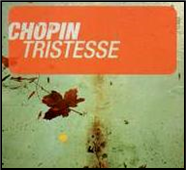 xxxxxMany of Chopin’s compositions revealed a deep love of his native land, its folk music and dance, but, in fact, he was to spend his life outside of Poland from the age of 18, mostly in Paris. On completion of his studies in 1829 he went on tour, visiting a number of German cities and playing in Vienna and Munich. To this period belongs his first piano concerto, a subtle, effortless and melodic work composed in 1830. But it was during that year, while paying a visit to Stuttgart, that he learnt of the Russian occupation of Warsaw during the November Uprising. This event might well have persuaded him not return to Poland, but to make his home in Paris, then the artistic capital of Europe. There, in fact, his delicate, refined style was more fully appreciated, and he earned a good living by composing and giving lessons and recitals at the musical parties of the rich and famous. As a cultured, quiet mannered man of good taste, this life suited him. In 1833 he wrote home, “I have found my way into the very best society, and have my place among ambassadors, princes and ministers.” To this early period belong a large number of piano studies, including Tristess and Butterfly, and the piano ballade Fantaisie-impromptu.
xxxxxMany of Chopin’s compositions revealed a deep love of his native land, its folk music and dance, but, in fact, he was to spend his life outside of Poland from the age of 18, mostly in Paris. On completion of his studies in 1829 he went on tour, visiting a number of German cities and playing in Vienna and Munich. To this period belongs his first piano concerto, a subtle, effortless and melodic work composed in 1830. But it was during that year, while paying a visit to Stuttgart, that he learnt of the Russian occupation of Warsaw during the November Uprising. This event might well have persuaded him not return to Poland, but to make his home in Paris, then the artistic capital of Europe. There, in fact, his delicate, refined style was more fully appreciated, and he earned a good living by composing and giving lessons and recitals at the musical parties of the rich and famous. As a cultured, quiet mannered man of good taste, this life suited him. In 1833 he wrote home, “I have found my way into the very best society, and have my place among ambassadors, princes and ministers.” To this early period belong a large number of piano studies, including Tristess and Butterfly, and the piano ballade Fantaisie-impromptu.
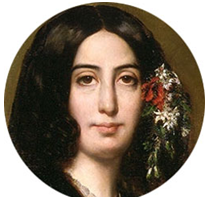 xxxxxAnd it was soon after arriving in Paris that he became a prominent member of a circle of young romantic composers which included Felix Mendelssohn, Vincenzo Bellini, Hector Berlioz and Franz Liszt. He became a particularly close friend of the last named, the Hungarian virtuoso pianist, and it was through him that he came to know George Sand (pen-name of Amandine Aurore Lucie Dupin) (illustrated), the notorious French novelist who was destined to play such a crucial role in his life over the next ten years. It was after paying his first visit to England in 1837, that he began to attend the house parties given by Sand at her country retreat at Nohant, about 180 miles south of Paris. Thus began their famous love affair. She offered to become his mistress, and they began to live together in the summer of 1838. By then, however, he had been suffering from tuberculosis for two years and his work was beginning to be seriously affected. To benefit from a warmer climate, he and Sand, together with her two children,
xxxxxAnd it was soon after arriving in Paris that he became a prominent member of a circle of young romantic composers which included Felix Mendelssohn, Vincenzo Bellini, Hector Berlioz and Franz Liszt. He became a particularly close friend of the last named, the Hungarian virtuoso pianist, and it was through him that he came to know George Sand (pen-name of Amandine Aurore Lucie Dupin) (illustrated), the notorious French novelist who was destined to play such a crucial role in his life over the next ten years. It was after paying his first visit to England in 1837, that he began to attend the house parties given by Sand at her country retreat at Nohant, about 180 miles south of Paris. Thus began their famous love affair. She offered to become his mistress, and they began to live together in the summer of 1838. By then, however, he had been suffering from tuberculosis for two years and his work was beginning to be seriously affected. To benefit from a warmer climate, he and Sand, together with her two children,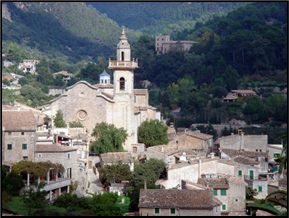 spent the winter of 1838-1839 on the island of Majorca. The visit, however, proved a disaster. They rented a small villa for their stay, but when the owner of the property learnt of the nature of Chopin’s illness, they were ordered to leave, and could only find accommodation at a Carthusian monastery in the remote village of Valldemossa (illustrated). This move, plus the onset of colder weather, caused a serious deterioration in Chopin’s health, and it took medical care and constant nursing by Sand to bring about a partial recovery.
spent the winter of 1838-1839 on the island of Majorca. The visit, however, proved a disaster. They rented a small villa for their stay, but when the owner of the property learnt of the nature of Chopin’s illness, they were ordered to leave, and could only find accommodation at a Carthusian monastery in the remote village of Valldemossa (illustrated). This move, plus the onset of colder weather, caused a serious deterioration in Chopin’s health, and it took medical care and constant nursing by Sand to bring about a partial recovery.
xxxxxOn their return to Paris they spent the next eight years living in the city over the winter months - during which he gave frequent recitals in the city’s fashionable salons - and at Nohant during the long, warm summers. And it was in the relaxed, tranquil atmosphere of Sand’s country home that Chopin composed some of his most compelling works. These included 24 delightful piano Preludes and his Piano Sonata No. 2 of 1839, which included his “Funeral March”, a work that captured more than any, perhaps, the range and beauty of his music. Later came two further Ballades, his Piano Sonata No 3, and his Barcarolle and Polonaise-Fantaisie of 1846. Like all his work, these were rich in original melody and, for the most part, were refined, intimate pieces of poetic and often sparkling beauty. There were, too, the occasional outbursts of passion in his compositions, and these served only to emphasise the overall delicacy and subtle rhythm of his unique and seemingly effortless style.
xxxxxHis love affair with Sand came to an end in 1847. A family quarrel between Sand and her daughter Solange in which Chopin sided with her daughter led to an estrangement between the two of them, and by 1848 the rift was complete. Devastated by the break-up, and anxious to get out of Paris following the February uprising, he accepted an invitation to visit England and Scotland. It was not a wise decision. The travelling this involved and the constant round of lessons and public appearances took their toll on his failing health. Totally exhausted and virtually lacking the will to live, he returned to Paris in January 1849 and died there later in the year, aged 39. His burial at the cemetery of Père Lachaise was attended by about 3,000 mourners, an indication of the esteem in which he was held.
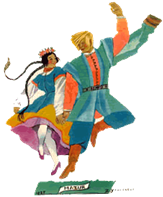 xxxxxChopin’s gift of producing exquisite, original melody rivalled that of both Mozart and Schubert. During his short musical career his compositions included two concertos for piano and orchestra, three piano sonatas, and a number of waltzes, but he is mostly remembered today for his twenty or more études, preludes and nocturnes - musical forms he himself perfected -, together with his stately polonaises and peasant-based mazurkas, both expressions of the deep love he felt for his native homeland. (The mazurka was a 16th century dance performed by the Mazurs, the inhabitants of the Mazovian Plains west of Warsaw.)
xxxxxChopin’s gift of producing exquisite, original melody rivalled that of both Mozart and Schubert. During his short musical career his compositions included two concertos for piano and orchestra, three piano sonatas, and a number of waltzes, but he is mostly remembered today for his twenty or more études, preludes and nocturnes - musical forms he himself perfected -, together with his stately polonaises and peasant-based mazurkas, both expressions of the deep love he felt for his native homeland. (The mazurka was a 16th century dance performed by the Mazurs, the inhabitants of the Mazovian Plains west of Warsaw.)
xxxxxThese works, together with the remarkable agility and subtlety with which they were played, made the piano an important instrument in its own right, whilst his brilliant harmonic and rhythmic innovations influenced, amongst others, the Hungarian pianist Franz Liszt, the German composer Richard Wagner, and the French composer Claude Debussy. And later composers, such as Antonin Dvorák, Edvard Grieg and Pyotr Tchaikovsky, were to be romantically inspired by a love for their homeland, a love first demonstrated so brilliantly by Chopin in the fashionable salons of high society.
xxxxxIncidentally, a great admirer of Chopin and his works was the German composer Robert Schumann. He regarded him as “the boldest and proudest poetic spirit of the time”. Earlier, on hearing his variations on La ci darem la mano, from Mozart’s Don Giovanni, he is said to have exclaimed, “Hats off, gentlemen, here is a genius!”. Likewise Felix Mendelssohn called him “a perfect virtuoso”. ……

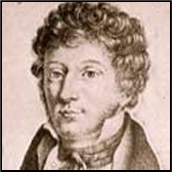 Xxxxx…… Thexnocturne, though generally associated with Chopin, was named and introduced earlier by the Irish-born pianist and composer John Field (1782-1837). He published the first set of nocturnes in 1814, and these reflective pieces, inspired by the coming of night, became noted for their beauty and tenderness. His compositions influenced the works not only of Chopin, but also Brahms, Schumann and Liszt. A one-time employee of the Italian pianist-composer Muzio Clementi, he accompanied him on his tour of France, Germany and Russia, and eventually settled in St. Petersburg. ……
Xxxxx…… Thexnocturne, though generally associated with Chopin, was named and introduced earlier by the Irish-born pianist and composer John Field (1782-1837). He published the first set of nocturnes in 1814, and these reflective pieces, inspired by the coming of night, became noted for their beauty and tenderness. His compositions influenced the works not only of Chopin, but also Brahms, Schumann and Liszt. A one-time employee of the Italian pianist-composer Muzio Clementi, he accompanied him on his tour of France, Germany and Russia, and eventually settled in St. Petersburg. ……
xxxxx…… It is said that Chopin’s Waltz No.3 in F Major was inspired by a cat walking over the keys of his piano! Later, a suite of his piano music was used as the basis for the ballet Chopiniana, produced by the Russian dancer and choreographer Mikhail Fokine in 1908. The ballet was renamed Les Sylphides the following year.
Including:
George Sand
Franz Liszt and
Isaac Albéniz

xxxxxThe French writer Aurore Dupin (1804-1876), known by her pen name George Sand, is best remembered today for her idealistic pastoral novels such as La Mare au Diable, The Country Waif and The Little Fairy, works in which love eventually triumphs despite the social barriers of convention and class. Earlier romantic works, however, like Indiana, Valentine and Lelia were passionate protests against the “slavery” endured by married women, and during the revolution of 1848 she wrote a number of pamphlets in favour of a republican form of government. Of interest, too, are her Story of My Life, her Tales of a Grandmother, and her collection of letters, many written to her friend the novelist Gustave Flaubert. Her writing apart, Sand’s unconventional life-style and her string of lovers - which included Prosper Mérimée, Alfred de Musset, and Frédéric Chopin - made her an object of both scandal and fascination in the Parisian society of her day, and her stand for female independence influenced, among others, the English writers Elizabeth Barrett Browning and George Eliot.
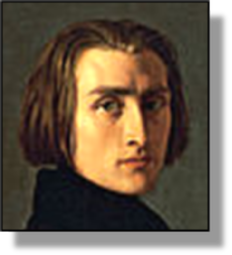 xxxxxThe Hungarian Franz Liszt (1811-1886), a friend and admirer of Frédéric Chopin, was also a brilliant pianist and composer, known especially for his lively Hungarian Rhapsodies and his delightful Liebestraum No. 3 in A flat, one of his Dreams of Love. Like Chopin, he showed musical talent as a young child, and by his early teens he was giving dazzling performances to admiring audiences in Paris and London, and playing for George IV at Windsor Castle. Apart from his large and varied selection of solo piano pieces, including his charming études, he also originated the symphonic poem - such as his Mazeppa of 1851 -, wrote a number of symphonies and concertos, and composed music for the church. In all, his compositions numbered over 700. His extensive tours of Europe, beginning in 1839, singled him out as one of the most innovative pianists and composers of his century, and one of the most charismatic concert artists of all time.
xxxxxThe Hungarian Franz Liszt (1811-1886), a friend and admirer of Frédéric Chopin, was also a brilliant pianist and composer, known especially for his lively Hungarian Rhapsodies and his delightful Liebestraum No. 3 in A flat, one of his Dreams of Love. Like Chopin, he showed musical talent as a young child, and by his early teens he was giving dazzling performances to admiring audiences in Paris and London, and playing for George IV at Windsor Castle. Apart from his large and varied selection of solo piano pieces, including his charming études, he also originated the symphonic poem - such as his Mazeppa of 1851 -, wrote a number of symphonies and concertos, and composed music for the church. In all, his compositions numbered over 700. His extensive tours of Europe, beginning in 1839, singled him out as one of the most innovative pianists and composers of his century, and one of the most charismatic concert artists of all time.
xxxxxLiszt was born in Raiding, Hungary, in 1811, and from an early age was taught music by his father, Adam, a talented amateur musician. His father took him to Vienna when he was ten, and it was there that he completed his musical studies and met and played for the great German composer Ludwig van Beethoven. After his first tour of Europe, during which he fascinated all by his immense talent, he settled in Paris in 1831 and became a particularly close friend of the romantic composers Hector Berlioz and Frédéric Chopin, and the literary figures Victor Hugo, Alphonse de Lamartine, Alfred de Musset and George Sand. And it was at this time that he attended performances by the Italian violin virtuoso Nicolò Paganini. Within a short while Liszt had won fame as a brilliant concert pianist, loved and rewarded wherever he went. And he was admired and not a little envied by the delicate and refined Chopin for his abundant energy, his panache as a showman, and the immense success of his public appearances.
xxxxxThree years later Liszt settled for a while in Geneva with his mistress the Countess Marie d’Agoult - his first big love affair - before embarking on his series of concert tours in 1839. Over the next eight years he travelled across Europe, from Dublin and Lisbon in the west to Istanbul and Moscow in the east. These tours marked the peak of his musical career. He was bestowed with gifts and honours wherever he performed, had numerous steamy love affairs and, despite his humble origins, was received with a frenzy of admiration in aristocratic circles.
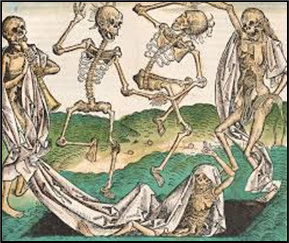
xxxxxIn 1848 he settled in Weimar with his new love the Russian princess Carolyne Sayn-Wittgenstein. There, as musical director and conductor of this peaceful old German town, he abandoned his career as a flamboyant virtuoso, and devoted his energies to conducting, composing, and teaching. Not surprisingly, some of his finest works were produced at Weimar. These included his Dante and Faust Symphonies, his famous Dance of Death (the Totentanz), his two piano concertos, and his highly romantic Liebestraume. And from this period belong eleven of his twelve symphonic poems, an orchestral composition which he himself devised in order to interpret a particular scene from a work of literature or art. Among these were the first two books of his Les Préludes Années de Pélerinage (The Years of Pilgrimage) - conjuring up the Swiss and Italian countryside -, his Mazeppa, based on works by Lord Byro n and Victor Hugo, and Orpheus, produced in 1854. In addition he wrote revised versions of his Transcendental Studies and adapted for the piano six of Paganini’s frantic pieces, three of Beethoven’s symphonies and a number of songs by Franz Schubert.
n and Victor Hugo, and Orpheus, produced in 1854. In addition he wrote revised versions of his Transcendental Studies and adapted for the piano six of Paganini’s frantic pieces, three of Beethoven’s symphonies and a number of songs by Franz Schubert.
xxxxxIn 1861 Liszt retired to Rome where, motivated by a life-long interest in religion - the influence of his father - he took minor orders and was made an Abbé by Pope Pius IX. During the next eight years he wrote a great deal of religious music - notably two masses and his oratorio Christus -, and composed further piano pieces based on works by Beethoven, Schubert and Wagner. In 1867 he wrote a Mass for the coronation of Emperor Francis Joseph of Austria as king of Hungary. After this period of settled life, however, he began his travels again, spending time in Weimar and Budapest (where he was made president of the Hungarian Academy of Music), and making visits further afield. One of his last engagements was a performance at Windsor Castle in 1886 in the presence of Queen Victoria. He died later that year while attending the Wagner Festival at Bayreuth in Germany.
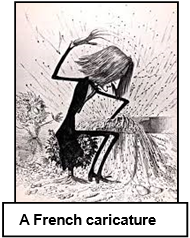 xxxxxDuring his long career, Liszt learnt a great deal from the music of Berlioz, Chopin and Wagner. For his part, he was most generous in his help to up-and-coming composers, such as Edvard Grieg, Aleksandre Borodin, Camille Saint-Saëns and Claude Debussy, and he constantly championed the works of his contemporaries, adapting for the piano the music of Bach, Beethoven, Schubert, Berlioz, Wagner, and Robert Schumann. His performance as a concert pianist, by its dazzling virtuosity, was paramount in making the piano an important solo and orchestral instrument (illustrated). Furthermore, whilst there were those who regarded some of his romantic music as crude - as Chopin himself did - it incorporated new ideas of form and harmony, and revealed a fine musical mind. His symphonic poems, and his idea of a recurring theme - a method aimed at uniting an entire piece - influenced in particular the works of Wagner, and his l
xxxxxDuring his long career, Liszt learnt a great deal from the music of Berlioz, Chopin and Wagner. For his part, he was most generous in his help to up-and-coming composers, such as Edvard Grieg, Aleksandre Borodin, Camille Saint-Saëns and Claude Debussy, and he constantly championed the works of his contemporaries, adapting for the piano the music of Bach, Beethoven, Schubert, Berlioz, Wagner, and Robert Schumann. His performance as a concert pianist, by its dazzling virtuosity, was paramount in making the piano an important solo and orchestral instrument (illustrated). Furthermore, whilst there were those who regarded some of his romantic music as crude - as Chopin himself did - it incorporated new ideas of form and harmony, and revealed a fine musical mind. His symphonic poems, and his idea of a recurring theme - a method aimed at uniting an entire piece - influenced in particular the works of Wagner, and his l ater compositions foreshadowed the music of Debussy.
ater compositions foreshadowed the music of Debussy.
xxxxxIncidentally, Liszt was a particularly close friend of Richard Wagner, whom he first met in 1848. When, in the following year, the German composer was forced to flee from the city of Dresden, Liszt helped him make his escape. Later Cosima, his daughter by the Countess Marie d’Agoult, married Wagner. ……
xxxxx…… Liszt produced a third piano concerto (in E flat) in 1839, but it was not performed during his lifetime, and did not come to light, in fact, until 1988. ……
xxxxx…… A great admirer of Beethoven, Liszt wrote a cantata for the Beethoven Festival of 1845, and produced concerts to raise money for the completion of the Beethoven monument in the Munsterplatz in Bonn. ……
xxxxx…… Liszt might well be seen as the first “pop star”. We are told that women swooned over his playing and his good looks, and fought over locks of his hair and buttons from his clothing!
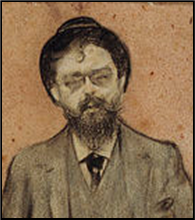 xxxxxDuring his career Liszt taught the piano to more than 400 pupils. A number of them became famous virtuosos, but none of them proved a patch on their master! Amongst them was the Spanish composer and virtuoso pianist Isaac Albéniz (1860-1909). He travelled widely as a concert pianist and, as a result, the music he composed was full of the colourful, sunny folk songs and dances from the various regions of Spain.
xxxxxDuring his career Liszt taught the piano to more than 400 pupils. A number of them became famous virtuosos, but none of them proved a patch on their master! Amongst them was the Spanish composer and virtuoso pianist Isaac Albéniz (1860-1909). He travelled widely as a concert pianist and, as a result, the music he composed was full of the colourful, sunny folk songs and dances from the various regions of Spain.
 xxxxxAlbéniz gave his first piano recital at the age of four, making his debut at the Teatro Romea in Barcelona. As a young man he travelled widely in South America and the United States before returning to Budapest in 1880 to take lessons from Liszt. He lived for a short time in London before settling in Paris in 1893. His works included Spanish Rhapsody for piano and orchestra in 1887, his Piano suite España, three years later, and his most famous work, Suite Iberia - twelve pieces inspired by the traditional music of his homeland - in 1909. He died in that year, aged 49, and, for his service to music, was posthumously awarded the Grand Gross of the Légion d’honneur by the French government.
xxxxxAlbéniz gave his first piano recital at the age of four, making his debut at the Teatro Romea in Barcelona. As a young man he travelled widely in South America and the United States before returning to Budapest in 1880 to take lessons from Liszt. He lived for a short time in London before settling in Paris in 1893. His works included Spanish Rhapsody for piano and orchestra in 1887, his Piano suite España, three years later, and his most famous work, Suite Iberia - twelve pieces inspired by the traditional music of his homeland - in 1909. He died in that year, aged 49, and, for his service to music, was posthumously awarded the Grand Gross of the Légion d’honneur by the French government.
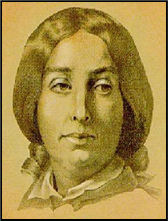
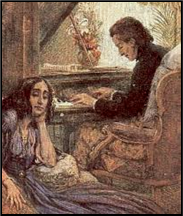 xxxxxThe French novelist Amandine Aurore Lucie Dupin (1804-1876), known by her pen-name George Sand as from 1832, gained notoriety for her independent life-style and her open disregard for social convention. She often wore men’s clothes and smoked cigars, and she had a string of lovers which included Prosper Merimée, Alfred de Musset and, more than likely, Franz Liszt. Her love affair with Frédéric Chopin, however, begun in 1838, lasted for close on ten years, and there is no evidence to suggest that during that time she was unfaithful to him. Indeed, she seemed to have had a deep affection for the brilliant Polish composer. She it was who offered to be his mistress and, during their liaison, she nursed him - almost mothered him - throughout his long and distressing illness. When a family quarrel brought an end to their affair in 1848, both were saddened by the break-up.
xxxxxThe French novelist Amandine Aurore Lucie Dupin (1804-1876), known by her pen-name George Sand as from 1832, gained notoriety for her independent life-style and her open disregard for social convention. She often wore men’s clothes and smoked cigars, and she had a string of lovers which included Prosper Merimée, Alfred de Musset and, more than likely, Franz Liszt. Her love affair with Frédéric Chopin, however, begun in 1838, lasted for close on ten years, and there is no evidence to suggest that during that time she was unfaithful to him. Indeed, she seemed to have had a deep affection for the brilliant Polish composer. She it was who offered to be his mistress and, during their liaison, she nursed him - almost mothered him - throughout his long and distressing illness. When a family quarrel brought an end to their affair in 1848, both were saddened by the break-up.
xxxxxSand was born in Paris, the daughter of a French army officer. She spent most of her childhood at Nohant, the country home of her grandmother, and was educated at a convent in Paris. At the age of eighteen she married Casimir Dudevant, a man many years her senior. She had two children by him, but the marriage was an unhappy one, and she eventually left him, moved to Paris in 1831, and lived with another man. The following year she took up writing to make a living and during her career wrote a large number of sentimental novels, stories, essays and plays. Her first novel Indiana, closely based on her own marital experience, roundly condemned the “imprisonment” and “slavery” endured by married women, and won her overnight fame. This work was quickly followed by the novels Val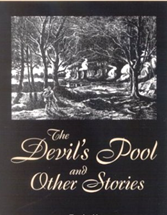 entine and Lelia, and these shocked the reading public by their frank discussion of a woman’s private desires, and the rightful need for women to find emotional and sexual satisfaction. Such bold pronouncements, together with her off-beat lifestyle and succession of lovers, made her a constant object of fascination as well as scandal in Parisian society.
entine and Lelia, and these shocked the reading public by their frank discussion of a woman’s private desires, and the rightful need for women to find emotional and sexual satisfaction. Such bold pronouncements, together with her off-beat lifestyle and succession of lovers, made her a constant object of fascination as well as scandal in Parisian society.
xxxxxIn the early 1840s she turned her attention to the ills of social injustice, taking up the cause of the working classes, and condemning the materialism of the bourgeoisie in works such as Consuelo and Le Meunier d’Angibault. Then, with the coming of the 1848 revolution, she took up the republican cause, using her considerable writing skills to produce pamphlets advocating the overthrow of the monarchy. Today, however, she is best remembered for her sentimental pastoral novels of the 1840s, seen by many as her finest works. Among these were The Devil’s Pool, The Country Waif, and The Little Fairy. These so-called rustic, idealistic novels in which love eventually transcends the social barriers of class and convention, revealed her ability as a story-teller and her deep love of country life, acquired during her childhood days at Nohant.
xxxxxHer Story of My Life was published in 1855, and this, together with Tales of a Grandmother, a series of stories she wrote for her grandchildren, are often regarded as her most enduring works. Her A Winter in Majorca is an account of her stay on the island with Chopin and her two children during the winter of 1838-39. A fluent and prolific writer, her letters are of particular interest, especially those written to the writer Gustave Flaubert, with who she carried on a lengthy correspondence. Although her life-style attracted a great deal of disapproval during her day, her high-profile stand for female independence influenced, amongst others, the English writers Elizabeth Barrett Browning and George Eliot.
xxxxxIncidentally, Sand wrote her first two novels in collaboration with her then lover, the French novelist Jules Sandeau. These were published under the name Jules Sand and this gave her the idea of her pen name when she published her own novel, Indiana, in 1832. ……
xxxxx…… Her short but highly romantic affair with Alfred de Musset, begun in 1833, is recounted in her She and Him, published in 1859. For his part, Musset gave an account of their relationship and break-up in his autobiographical novel Confessions of a Child of the Century, produced in 1835.
Va-1837-1861-Va-1837-1861-Va-1837-1861-Va-1837-1861-Va-1837-1861-Va-1837-1861-Va
xxxxxThe Hungarian Franz Liszt (1811-1886), like his friend Chopin, was a brilliant pianist and composer. Today, he is especially remembered for his lively Hungarian Rhapsodies and his Dreams of Love (Liebestraume). He gained recognition as a virtuoso pianist in his early teens, and his series of concert tours across Europe, beginning in 1839, astonished and fascinated his audiences by the originality of his romantic compositions, and his flamboyant mastery of the keyboard. Apart from a vast selection of solo piano pieces, he also originated the symphonic poem - the interpretation of a scene from art or literature -, wrote a number of symphonies and concertos, and composed music for the church. His 700 or more compositions owed much to Chopin and Wagner. For his part, he was most generous to young composers, such as Grieg, Borodin, Debussy and Saint-Saëns, and, by adapting for the piano the music of contemporary composers, he assisted among others, Bach, Beethoven, Schubert, Berlioz, Schumann and Wagner. He also numbered among his friends the writers Hugo, Lamartine, Musset and Sand, and the violin virtuoso Paganini. His works did much to make the piano an important solo and orchestral instrument.






 xxxxxThe Polish romantic composer and pianist Frédéric Chopin, one of the world’s most talented and inventive musicians, wrote almost entirely for solo piano, and produced a steady stream of inspired music, including waltzes, nocturnes, preludes, mazurkas and polonaises. His mastery of the keyboard revolutionized the technique of playing the pianoforte, and his compositions, mostly in relatively small pieces, became known for their attention to pure form and their rich and varied melody, ranging in mood from the stormy and sad to the tender and majestic.
xxxxxThe Polish romantic composer and pianist Frédéric Chopin, one of the world’s most talented and inventive musicians, wrote almost entirely for solo piano, and produced a steady stream of inspired music, including waltzes, nocturnes, preludes, mazurkas and polonaises. His mastery of the keyboard revolutionized the technique of playing the pianoforte, and his compositions, mostly in relatively small pieces, became known for their attention to pure form and their rich and varied melody, ranging in mood from the stormy and sad to the tender and majestic.  xxxxxMany of Chopin’s compositions revealed a deep love of his native land, its folk music and dance, but, in fact, he was to spend his life outside of Poland from the age of 18, mostly in Paris. On completion of his studies in 1829 he went on tour, visiting a number of German cities and playing in Vienna and Munich. To this period belongs his first piano concerto, a subtle, effortless and melodic work composed in 1830. But it was during that year, while paying a visit to Stuttgart, that he learnt of the Russian occupation of Warsaw during the November Uprising. This event might well have persuaded him not return to Poland, but to make his home in Paris, then the artistic capital of Europe. There, in fact, his delicate, refined style was more fully appreciated, and he earned a good living by composing and giving lessons and recitals at the musical parties of the rich and famous. As a cultured, quiet mannered man of good taste, this life suited him. In 1833 he wrote home, “I have found my way into the very best society, and have my place among ambassadors, princes and ministers.” To this early period belong a large number of piano studies, including Tristess and Butterfly, and the piano ballade Fantaisie-
xxxxxMany of Chopin’s compositions revealed a deep love of his native land, its folk music and dance, but, in fact, he was to spend his life outside of Poland from the age of 18, mostly in Paris. On completion of his studies in 1829 he went on tour, visiting a number of German cities and playing in Vienna and Munich. To this period belongs his first piano concerto, a subtle, effortless and melodic work composed in 1830. But it was during that year, while paying a visit to Stuttgart, that he learnt of the Russian occupation of Warsaw during the November Uprising. This event might well have persuaded him not return to Poland, but to make his home in Paris, then the artistic capital of Europe. There, in fact, his delicate, refined style was more fully appreciated, and he earned a good living by composing and giving lessons and recitals at the musical parties of the rich and famous. As a cultured, quiet mannered man of good taste, this life suited him. In 1833 he wrote home, “I have found my way into the very best society, and have my place among ambassadors, princes and ministers.” To this early period belong a large number of piano studies, including Tristess and Butterfly, and the piano ballade Fantaisie- xxxxxAnd it was soon after arriving in Paris that he became a prominent member of a circle of young romantic composers which included Felix Mendelssohn, Vincenzo Bellini, Hector Berlioz and Franz Liszt. He became a particularly close friend of the last named, the Hungarian virtuoso pianist, and it was through him that he came to know George Sand (pen-
xxxxxAnd it was soon after arriving in Paris that he became a prominent member of a circle of young romantic composers which included Felix Mendelssohn, Vincenzo Bellini, Hector Berlioz and Franz Liszt. He became a particularly close friend of the last named, the Hungarian virtuoso pianist, and it was through him that he came to know George Sand (pen- spent the winter of 1838-
spent the winter of 1838- xxxxxChopin’s gift of producing exquisite, original melody rivalled that of both Mozart and Schubert. During his short musical career his compositions included two concertos for piano and orchestra, three piano sonatas, and a number of waltzes, but he is mostly remembered today for his twenty or more études, preludes and nocturnes -
xxxxxChopin’s gift of producing exquisite, original melody rivalled that of both Mozart and Schubert. During his short musical career his compositions included two concertos for piano and orchestra, three piano sonatas, and a number of waltzes, but he is mostly remembered today for his twenty or more études, preludes and nocturnes -
 Xxxxx…… Thexnocturne, though generally associated with Chopin, was named and introduced earlier by the Irish-
Xxxxx…… Thexnocturne, though generally associated with Chopin, was named and introduced earlier by the Irish-
 xxxxxThe Hungarian Franz Liszt (1811-
xxxxxThe Hungarian Franz Liszt (1811-
 n and Victor Hugo, and Orpheus, produced in 1854. In addition he wrote revised versions of his Transcendental Studies and adapted for the piano six of Paganini’s frantic pieces, three of Beethoven’s symphonies and a number of songs by Franz Schubert.
n and Victor Hugo, and Orpheus, produced in 1854. In addition he wrote revised versions of his Transcendental Studies and adapted for the piano six of Paganini’s frantic pieces, three of Beethoven’s symphonies and a number of songs by Franz Schubert. xxxxxDuring his long career, Liszt learnt a great deal from the music of Berlioz, Chopin and Wagner. For his part, he was most generous in his help to up-
xxxxxDuring his long career, Liszt learnt a great deal from the music of Berlioz, Chopin and Wagner. For his part, he was most generous in his help to up- ater compositions foreshadowed the music of Debussy.
ater compositions foreshadowed the music of Debussy.  xxxxxDuring his career Liszt taught the piano to more than 400 pupils. A number of them became famous virtuosos, but none of them proved a patch on their master! Amongst them was the Spanish composer and virtuoso pianist Isaac Albéniz (1860-
xxxxxDuring his career Liszt taught the piano to more than 400 pupils. A number of them became famous virtuosos, but none of them proved a patch on their master! Amongst them was the Spanish composer and virtuoso pianist Isaac Albéniz (1860- xxxxxAlbéniz gave his first piano recital at the age of four, making his debut at the Teatro Romea in Barcelona. As a young man he travelled widely in South America and the United States before returning to Budapest in 1880 to take lessons from Liszt. He lived for a short time in London before settling in Paris in 1893. His works included Spanish Rhapsody for piano and orchestra in 1887, his Piano suite España, three years later, and his most famous work, Suite Iberia -
xxxxxAlbéniz gave his first piano recital at the age of four, making his debut at the Teatro Romea in Barcelona. As a young man he travelled widely in South America and the United States before returning to Budapest in 1880 to take lessons from Liszt. He lived for a short time in London before settling in Paris in 1893. His works included Spanish Rhapsody for piano and orchestra in 1887, his Piano suite España, three years later, and his most famous work, Suite Iberia -
 xxxxxThe French novelist Amandine Aurore Lucie Dupin (1804-
xxxxxThe French novelist Amandine Aurore Lucie Dupin (1804- entine and Lelia, and these shocked the reading public by their frank discussion of a woman’s private desires, and the rightful need for women to find emotional and sexual satisfaction. Such bold pronouncements, together with her off-
entine and Lelia, and these shocked the reading public by their frank discussion of a woman’s private desires, and the rightful need for women to find emotional and sexual satisfaction. Such bold pronouncements, together with her off-

